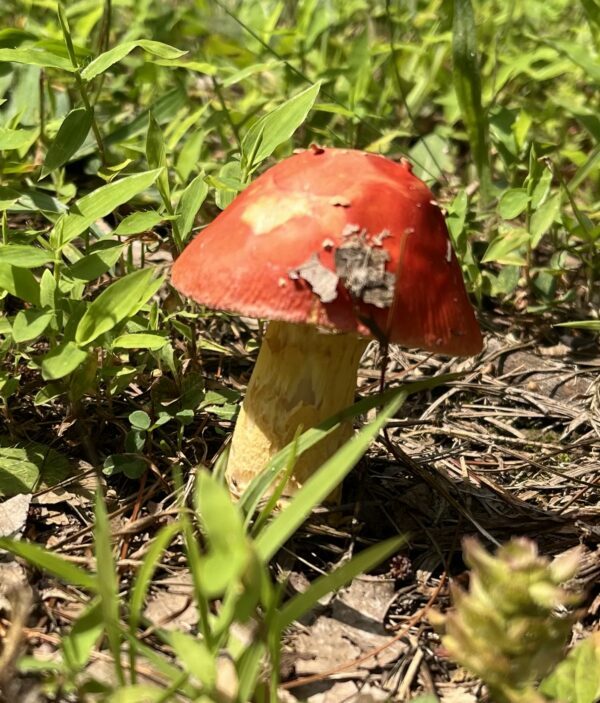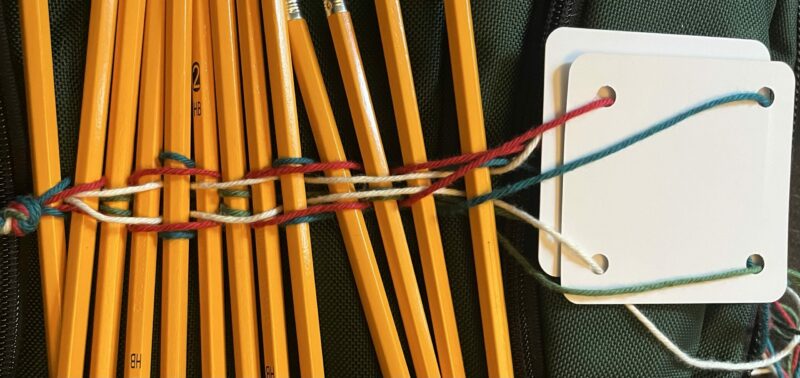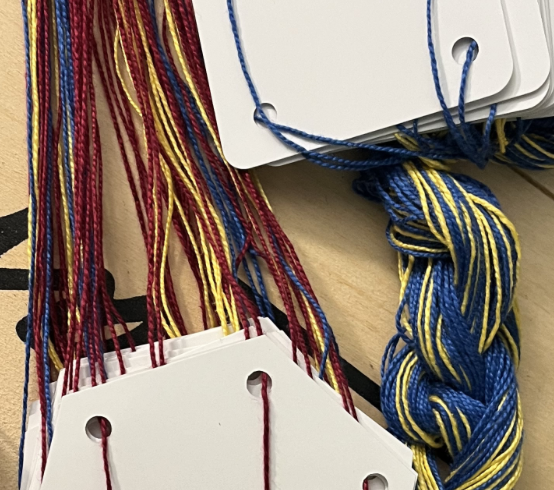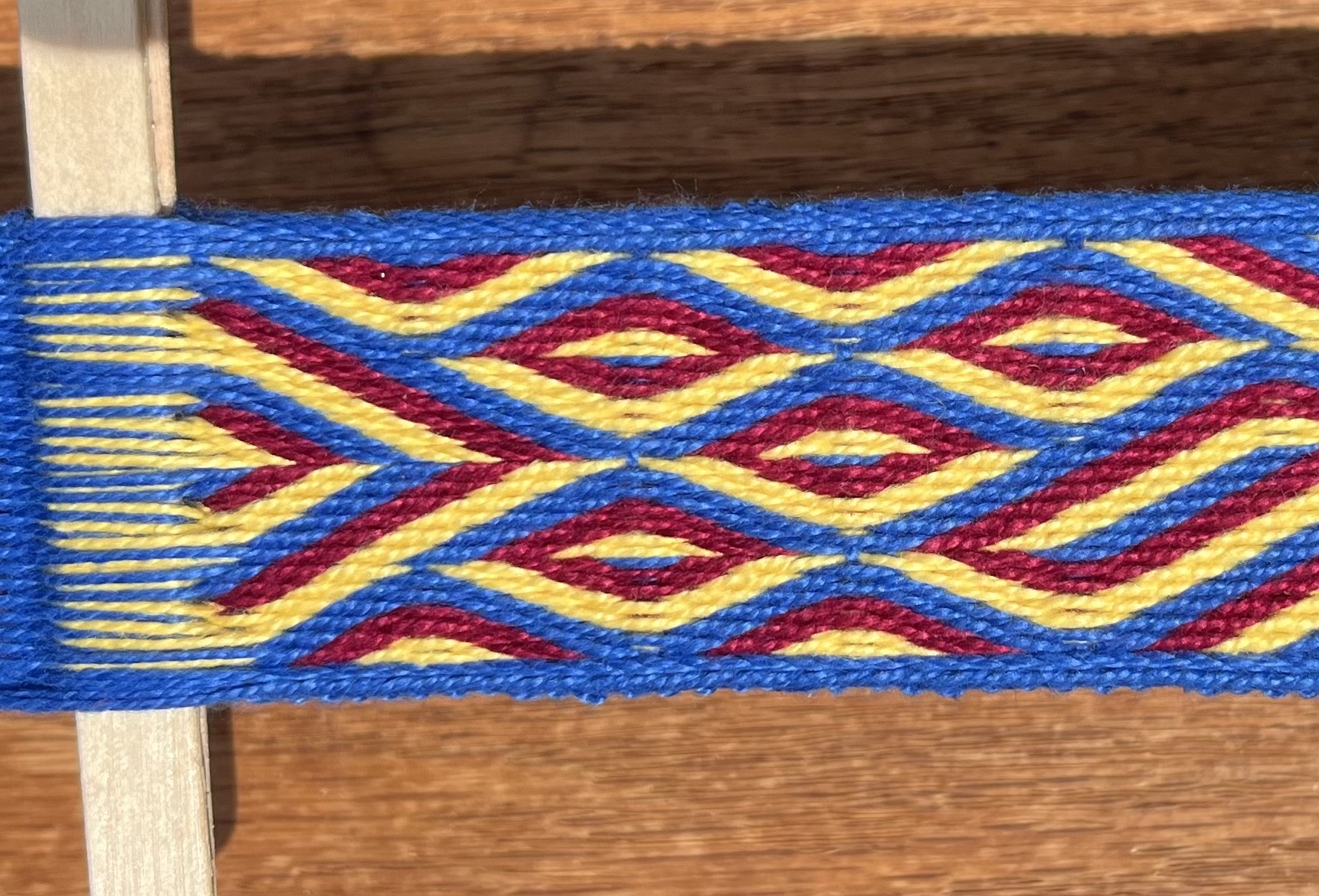So I want to do some dyeing… I have some Procion MX dyes for cellulosic fibers, and a small stash of natural dyes, and I’ve even done some koolaid dyeing, but I want to do something different. The best dyes for wool are the acid dyes (not as scary as they sound, since the acid can be something as simple as vinegar. These dyes come in a wide range of colors, and in several brands. Now, I’m a scientist, and I’ve had waaaay too many semesters of chemistry, so I wanted to know something about these dyes before I decided which to buy – which are pure dyes, and which are mixtures? Are some more readily soluble, and do some behave better in mixtures? On the artistic side, which ones do well as primary colors for mixing an entire palette? I’m sure that everyone knows the answers to these questions, but I had a difficult time finding the information I wanted, so I’m collecting it here in one place in hopes that it will save someone else a bit of time (and help me remember).
Dharma Trading has the best price on acid dyes that I’ve found so far – not surprising. I’ve bought all kinds of things from them for many years. They have a good selection of colors and detailed directions, but not much information on the makeup of the dyes.
The manufacturer of the Jacquard line of acid dyes is much more helpful. They have a technical info page with solubilities and compositions, as well as useful information like lightfastness and washfastness. This is a great start, but I’m still looking for suggestions on primaries. The information on composition lets me rule out a number of dyes, since mixtures don’t make good primary colors.
Dyes are subtractive (like paint and ink), so the primaries are yellow, blue and red. Remember kindergarten? You can mix yellow and blue to get green, so green is a secondary color and not a primary color, but there’s nothing you can mix to get yellow. You need to start with a yellow pigment. In printing, the primaries used are actually yellow, cyan (instead of blue) and magenta (instead of red), along with black. I’m sure you could mix perfectly good colors with those primaries, but I’d rather have “truer” red and blue to start with. Black isn’t technically a primary, but having a black pigment or dye makes it possible to get darker colors with less work. With opaque media (paint) you also want white to lighten colors, but for dyes you use a less-concentrated dyebath on a white substrate to get the same effect.
Once the mixtures are eliminated, there are still several possible yellows, blues and reds… which to choose? I want all of them, of course! But that seems a bit excessive (I know, not a word that should be applied to textile arts), so I’d like to narrow it down further.
Because these are real pigments, they won’t be exactly the primaries anyway. One approach would be to pick out a “warm” set of primaries and a “cool” set of primaries – mixing the same secondary color, say orange, from warm and from cool primary colors would give a different visual effect. A different manufacturer of acid dyes, ProChem, maker of the WashFast line, offers kits with warm or cool primaries. Their numbering system is different, but the names are mostly the same. Acid dyes use a fairly standard line of pigments regardless of manufacturer. Of course, you could always just buy the ProChem dyes instead. The ProChem warm palette: Golden Yellow, National Blue and Bright Red. The cool palette is: Sun Yellow, Magenta and Bright Blue.
Back to the Jacquard dyes: Sun Yellow (601) and Bright Blue (623) catch my eye, and meet the criteria of single-pigment and “attractive” primaries (attractive to me, that is). Sky Blue (621) would also be a good choince, I think. Red is harder though. Hot Fuschia (620) and Cherry Red (618) are the only real choices, since most of the red colors are mixtures. Fuschia (magenta) would be the proper choice, but I’m just not a magenta fan, so Cherry Red it is.
My choice of primaries: Sun Yellow (601), Bright Blue (623), Cherry Red (618), along with Jet Black (639). I will also purchase citric acid – you can use household vinegar, but simmering vinegar smells and citric acid doesn’t! Of course, when dyeing you should use a dust mask when handling powders, and rubber gloves to protect your hands from heat and turning funny colors. And never, never, never use any pans or utensils you plan to use for food! Dharma Trading also sells everything but the pans, but I have a wide assortment of accessories. I still have plenty of Synthrapol too – a detergent designed especially for dyeing, and wonderful stuff.
If you need storage bottles for stock solution (the way to go – you only need to measure powders once!), or measuring tools – graduated cylinders, droppers, etc, US Plastic looks like a good source, but I haven’t dealt with them yet.
Next… things to put in the dye!






5 responses to “Pretty colors”
Sounds fun!!! I’m interested to see how it turns out. My experience is almost wholly with Procion dyes on cotton, silk etc. One color “issue” I finally figured out–not a magenta fan myself, but it took magenta to get the real purple purple I had kept missing. So I’m curious to see how Jacquard works for you. Try some purple for me!
Yeah, I’m afraid that taste will lose out to physics and I’ll have to acquire magenta. I plan to do a full range of small samples of wool and silk (this weekend, if everything arrives as scheduled) and keep notes so that I can duplicate whatever inspires me. Purples must be purple, of course, and I’ll let you know how close I manage to come.
For color mixing there’s a book on color theory you might be interested in: Yellow and Blue Don’t Make Green. It is primarily for painters, but the theory holds for dyeing.
I’ve used it a little for dyeing, more for painting. The main contention of the book is that there is no pure yellow, blue or red pigment in nature. All yellow pigments for example lean slightly towards blue or red. This makes for impure mixtures which can make muddy colors. He works with two pigments for each of the primaries. So to get a clear green, he mixes a yellow with a green tint and a blue with a green tint. To get a clear purple, he mixes a red with a blue tint and a blue with a red tint. The book has many example of color mixing and how pigments affect the result.
Debbie, thanks for the reference. I’ll check my local libraries. That sounds a bit like a more elaborate version of what I was saying about having warm primaries and cool primaries, since there are no “perfect” primaries.
Incidentally, my dye order won’t arrive until next week, so I don’t get to try it out for AGES! :(
If you want to try something while you wait, a while back I did a little experimenting with watercolours (thanks to a book Kim loaned me, the name of which escapes me at the moment). If you have tubes (easiest) of the warm and cool “primaries” you can play around with mixing colours and even blacks. It was illuminating.